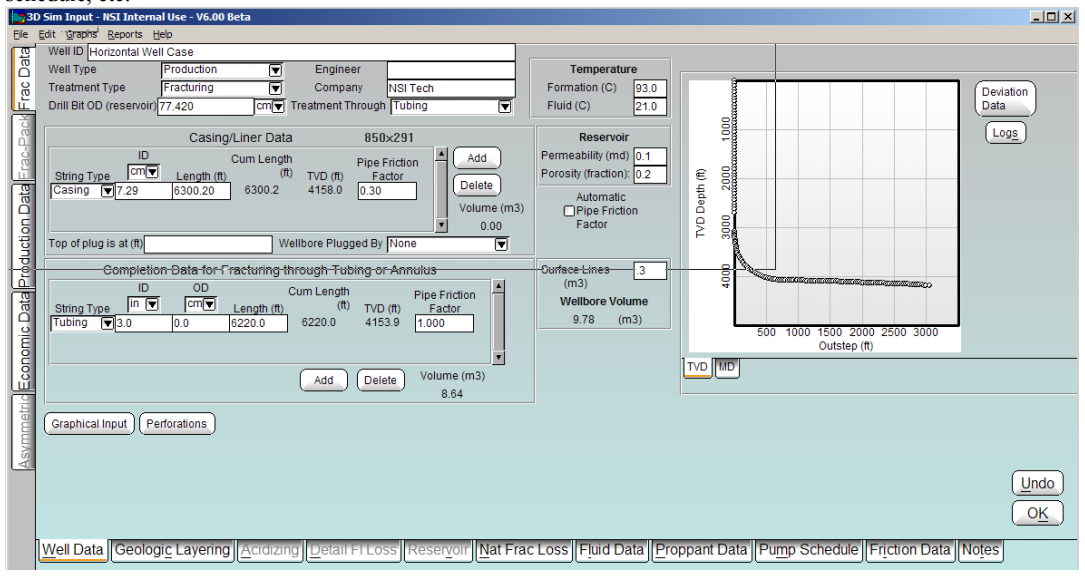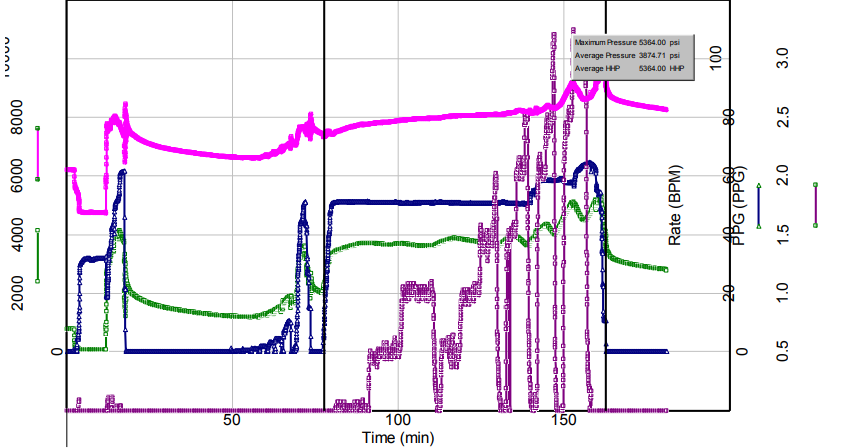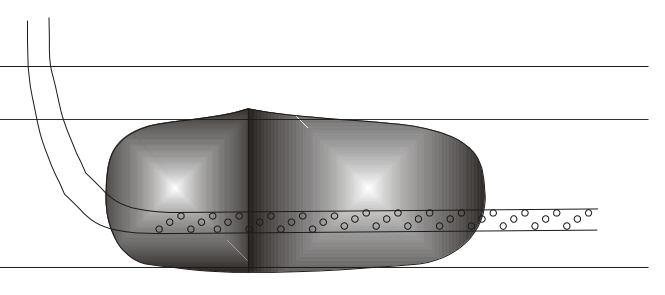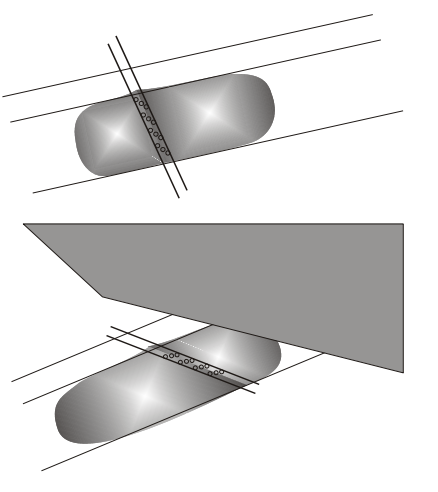
NSI Technologies proudly presents www.fraceverything.com. Click here for your frac everything gear.
Hydraulic Fracturing Engineering and Software Solution, for Your Most Challenging Reservoirs.
Changes – StimPlan/E-StimPlan 6.00 November 2009
StimPlan
- Auto Save – StimPlan has been modified to periodically update a “Save” file (every time new logs or pressure data is imported, every time a simulation is run, every time you return to the main menu from the Input Dialogs, etc.). Through the use of compressed file formats, the time for this has been made negligent. This should provide for any cases where StimPlan (or Windows) has problems, and StimPlan forcibly closes. A simple re-start will result in the software reading the last “save” file, hopefully with all, or (at a minimum) nearly all of your data intact.
- Automatic Net Pressure Matching – Within user set limits (i.e., specify a “Modulus Multiplier” between 0.3 and 3.0) for various variables, the best net pressure match solution is automatically found.
- Pump Schedule – Optionally allow use of a “Downhole Pump Schedule” (the historic StimPlan input behavior) or a “Surface Pump Schedule”.
- Perforations – Improved “N-Frac” capability where an unlimited number of separate perforated intervals can be simulated.
- Proppant Embedment – Allowed specifying “proppant embedment” on a layer-by-layer basis.
- Graphical Input – Added graphical input options for proppant/fluid data.
- Modified input dialogs to more accurate reflect daily operations. For example, Well Data is now for well data (as seen in the figure) casing/tubing/depth/perforation information. Input can be a downhole, or a surface pump schedule, etc.
- Correlations – Many, manymore correlations for “minor” input values.
- Pipe Friction – Added capability to calculate pipe friction for guar based fluids.

Analysis/Logs Modules
- Data Plot
- Allow “Detachable Plots” for Real Time data monitoring. Using this new feature, you can create multiple separate plot windows with different data being updated/plotted in real time.
- Add “Time Event” notes/markers to plots as seen below
- Calculate HHP – A new facility has been adding for calculating treatment parameters in a specified time window. These parameters include Maximum Pressure, Average Pressure, and Hydraulic Horsepower.

E-StimPlan
- Movies – Added capability to automatically create PowerPoint “movies” from Contour Plots.
- Expanded Batch Mode Capability – The rigorous E-StimPlan Fully 3D simulations can be time consuming for some applications. This new feature allows creating a “task list” of runs. These are then executed over-night, with the results automatically archived at the completion of each simulation.
- Add an option to overlay an outline of the grid on the Contour Plot output.
Major Development
- Implement implicit solution and parallel processing to speed Fully 3D solutions.
- Asymmetric Fracture Growth
Recent micro-seismic measurements have indicated the possibility for asymmetric fractures, i.e., fractures with wing lengths longer in one direction than the other. Some of this data may be questionable; however for a confined height fracture the potential for fracture asymmetry is high. This can be seen from the simple net pressure relation for a perfectly confined height fracture,showing that PNet is only sensitive to length to the ¼ power, “L1/4”. Thus, a significant difference in length for one wing versus another can easily be offset by a small difference in formation thickness in one direction versus another.
This topic was not discussed at the meeting other than in the context of “this is required” for coupling the wellbore/fracture models. However, such a development might have limited (but valuable) importance on its own. Fracture asymmetry could be of major importance in any low permeability fracturing where long fracture lengths are needed. It could also be very important in water flood situations where large pore pressure gradients might exist which could easily force extreme asymmetry. This would be expanded to include cases such as pictured below.- Longitudinal Horizontal Fractures
This development would allow simulation of a fracture initiating at the heel of a highly deviated well and propagating preferen-tially towards the toe (maybe withsome propagation “backwards”). This would be limited to the Fully 3D (but just possibly cold be used with E-StimPlan) and the Finite Element option would be applicable.
Possibly, the well might not have to be purely horizontal, but could have some small angle (and or be based on an actual well path). - Dipping Formations – This would also allow simulation of fracturing in dipping beds (thought all the beds would be limited to the same dip). This case would be limited to the Fully 3D, and the Finite Element option would be applicable.
- Dipping Formations with Disconformity – This would be a case as seen in the figure, where the disconformity acts as a perfect barrier to growth. This case would, of course, be limited to the Fully 3D model, and due to the loss of symmetry, the Finite Element simulation capabilities for layered modulus would NOT be applicable.


- Longitudinal Horizontal Fractures